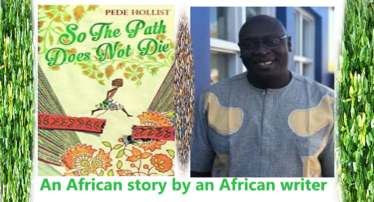
Summary of So The Path Does Not Lie by Pede Hollist
‘So The Path Does Not Lie’ is among the newly recommended books for WAEC, NECO, and GCE literature candidates from 2026 to 2030. Written by a Sierra Leonean English professor residing in the United States, the novel employs various tactics to trace the events unfolding around a young girl from age nine to adulthood, making it a bildungsroman.
In the novel, Hollist comments on the plight of women in rural Africa, specifically Sierra Leone, and the clash of cultures between Africans and African Americans. The narrative begins in Africa, chronicling Fina’s life from a young age in a Sierra Leonean village before transitioning to the United States and ultimately returning to Africa, where she seeks to mend the broken path of her childhood.
Plot
The story commences with preparations underway to initiate a young girl named Finaba into a traditional Sierra Leonean ritual involving female genital mutilation to signify her passage into adulthood. However, Finaba’s family, despite residing in the village, opposes the idea of mutilating their daughter’s genitals.
Conversely, Finaba’s grandmother, Baramusu, eagerly anticipates the initiation, viewing her granddaughter as the embodiment of a dying ancient tradition.
On the day of the ritual, Finaba’s father intervenes to prevent it, an action deemed abominable by his tribesmen, who consequently curse him. Under pressure, Finaba and her family flee to Freetown, the capital city, where they settle.
As years pass, Fina matures, navigating through secondary school and college in the city. Despite the move, they remain plagued by tribalism and hardship, exacerbated by her father’s premature death, leaving her vulnerable. She faces further challenges when she is adopted by a family that mistreats her, and later encounters harassment from a professor during her college years.
Despite these adversities, she perseveres, eventually securing a scholarship to study in the United States, facilitated by her admirer and an NGO.
Filled with hope, Fina embarks on a journey to the United States, where she finds employment, and a partner, and begins engaging with African American, Caribbean, and African diaspora communities. She develops relationships with Aman, an African American professor eager to visit Africa, and Cammy, a Trinidadian surgeon who is shocked by the prevalence of female genital mutilation in Sierra Leone.
Throughout the narrative, the author presents instances of cultural clashes without resorting to stereotypes.
Setting
The novel unfolds initially in rural Sierra Leone before transitioning to urbanized areas of the country and ultimately to the United States.
Finaba’s journey encompasses her life from childhood in a Sierra Leonean village to adulthood in Freetown and the United States, highlighting the cultural contrasts between Africans, African Americans, and Caribbeans.
Finaba is the protagonist of the story.
Other WAEC recommended texts
To Kill a Mockingbird Summary & Analysis
WAEC/NECO Recommended Literature Texts 2026-2030
